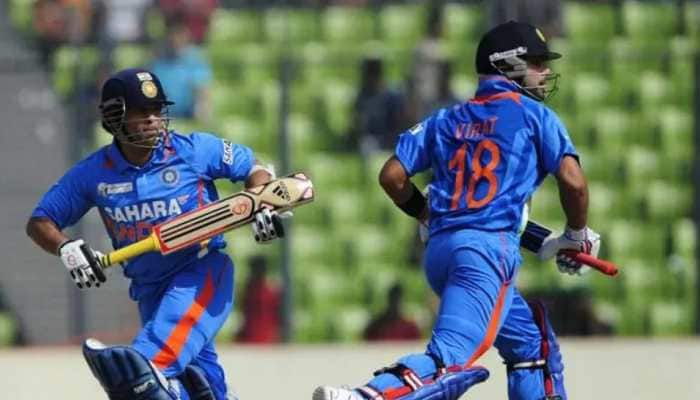What Is Congenital Heart Defect - Expert Shares Inputs
Abnormalities of the heart structure or function that are present at birth entail congenital heart defects. Some common types of congenital heart defects include Atrial Septal Defect, Ventricular Septal Defect, Patent Ductus Arteriosus, Aortic Stenosis and Pulmonary Stenosis.
- Atrial Septal Defect happens when there's an opening in the septum (the wall) between the atria (upper chambers) of the heart
- Ventricular Septal Defect is when an opening in the septum between the ventricles (lower chambers) of the heart
- Narrowing of the aortic valve, which obstructs blood flow from the left ventricle to the aorta, means Aortic Stenosis
Trending Photos
) Image by Freepik (representational purposes)
Image by Freepik (representational purposes) Recently on February 14, when the world celebrated Valentine's Day, another special - and far more critical - day related to the heart was observed - Congenital Heart Defect (CHD) Awareness Day. Congenital Heart Defects are structural abnormalities of the heart that are present at birth. "The incidence of CHD is approximately 8-10/ 1000 live births, however incidence is much higher in aborted foetuses. There are various types of congenital heart defects, which can affect different parts of the heart and can vary in severity," says Dr Ashutosh Marwah, Director - Paediatric Cardiology, Fortis Escorts Heart Institute, Okhla Road, New Delhi.
Some common types of congenital heart defects include Atrial Septal Defect (ASD), Ventricular Septal Defect (VSD), Patent Ductus Arteriosus (PDA), Aortic Stenosis and Pulmonary Stenosis. Dr Marwah explains the different types of congenital defects:
Atrial Septal Defect (ASD): An opening in the septum (the wall) between the atria (upper chambers) of the heart.
Ventricular Septal Defect (VSD): An opening in the septum between the ventricles (lower chambers) of the heart.
Patent Ductus Arteriosus (PDA): Failure of the ductus arteriosus, a blood vessel that connects the pulmonary artery to the aorta, to close after birth.
Aortic Stenosis: Narrowing of the aortic valve, which obstructs blood flow from the left ventricle to the aorta.
Pulmonary Stenosis: Narrowing of the pulmonary valve, depending on severity may need balloon dilatation.
Tetralogy Of Fallot: A combination of four heart defects that include a ventricular septal defect (VSD), pulmonary stenosis (narrowing of the pulmonary valve and artery), overriding aorta (aorta is shifted towards the right ventricle), and right ventricular hypertrophy (thickening of the muscle of the right ventricle).
Also Read: What Is Alaskapox Virus And How Fatal Is It: Symptoms, Ways Of Transmission And More
Transposition Of The Great Arteries (TGA): A condition in which the aorta and pulmonary artery are switched in position.
Coarctation Of The Aorta: Narrowing of the aorta, the main artery that carries oxygen-rich blood from the heart to the body.
Ebstein's Anomaly: A defect in which the tricuspid valve, located between the right atrium and the right ventricle, is abnormally positioned and does not function properly.
Pulmonary Atresia: Absence or abnormal closure of the pulmonary valve, which obstructs blood flow from the right ventricle to the pulmonary artery.
Total Anomalous Pulmonary Venous Connection (TAPVC): Abnormal connection of the pulmonary veins to the right atrium instead of the left atrium.
Tricuspid Atresia: Absence or underdevelopment of the tricuspid valve, which separates the right atrium and right ventricle.
Dr Marwah adds that treatment options vary depending on the type and severity of the defect and may include medications, catheter-based procedures, or surgery.
Stay informed on all the latest news, real-time breaking news updates, and follow all the important headlines in india news and world News on Zee News.
Live Tv







)
)
)
)
)
)
)
)
)
)
